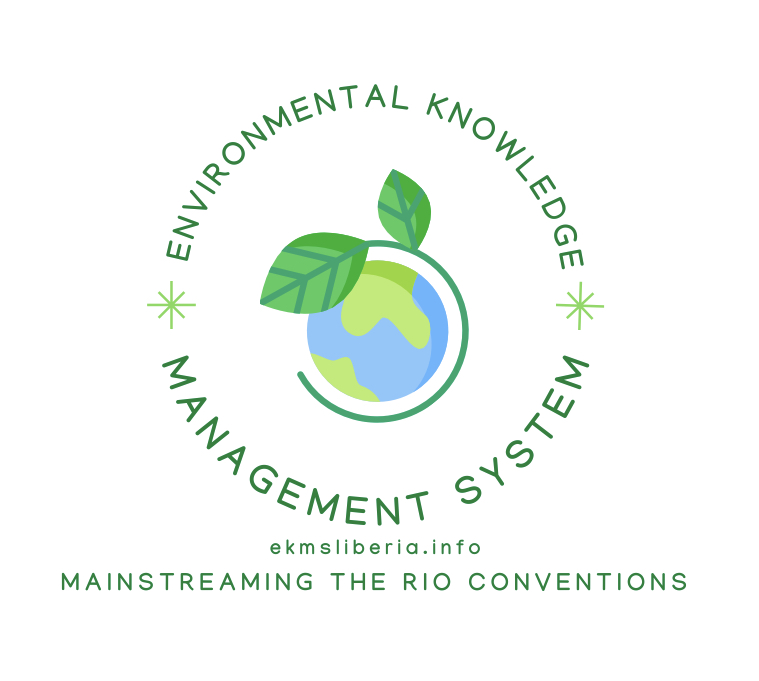Liberia possesses abundant surface water and six principal rivers (including Cavalla, Cestos, Lofa, Mano, Saint John and St Paul). Together, these river basins drain approximately 65.5% of the country. The Mano and Cavalla rivers are shared basins between Sierra Leone and Cote d‘Ivoire respectively, while the Lofa, Saint John and Saint Paul drain part of Guinea. Numerous micro watersheds or sub-watersheds also exist. The major rivers flow in a northeast to southwest direction due to topographical conditions en route to the Atlantic Ocean (UNEP/NESDA, 2002). Major exceptions to these patterns are the middle reaches of the Cavalla and Dugbe Rivers in eastern Liberia, which flow parallel to the coast in their lower reaches before entering the Atlantic Ocean.
These ecosystems differ from the coastal/ marine ecosystems in that they do not contain salt, that‘s why they are sometimes referred to as freshwater. In Liberia, these ecosystems are habitats for various species of reptiles, amphibians, fish, mollusks, worms, protozoa and other fauna species that cannot adapt to salinity environments. Three basic kinds of freshwater ecosystems exist in the country. They are (i) Slow-flowing or still water (such as pools, ponds and lakes); (ii) Fast-flowing water (such as streams and rivers); and (III) Stagnant and inundated/saturated inland wetlands (such as marshland, swamp, and ground water) in which the soil is flooded temporarily or drenched either temporarily or permanently throughout the year.
Most rural communities benefit directly or indirectly from freshwater ecosystems for various services including provision of drinking water, water for irrigation, water for other home uses and water for food production/processing. Freshwater ecosystems also provide services such as hydroelectric power generation, water purification and waste removal, nutrient cycling, transportation, recreation, flood control and climate regulation. Inland wetland landscapes are very important for food production, especially in communities where fertile terrestrial soils have become infertile due to overuse and mismanagement. Inland swamps are particularly used for rice cultivation, referred to as paddy farming. Threats to Liberia‘s inland wetlands include but not limited to poisoning of water bodies to kill fish, gold and diamond mining (some gold miners reportedly use mercury which is poisonous to animals including man himself).
More studies on inland wetlands and fresh water are urgent in Liberia, especially to determine the conservation values of the biodiversity they contain and water quality in terms of salinity (which is also a determining factor in the kinds of species found in saturated habitat) . It is also important for determining the degree of salinity in estuaries or lagoons to determine their status as fresh, intermediate or brackish water. Many freshwater organisms are intolerant of salt, so such information can help which organisms habilitate in different places. Additionally, such information on freshwater is important for human health since freshwater is used for drinking in many rural communities. As of 2002, a total of eight (8) wetlands had been identified for conservation actions. They are Lake Piso, Marshall, Mesurado, Lake Shepherd, Bafu Bay, Cestos-Senkwehn, Gbedin, and Kpatawee. Some of these lakes have waterfalls, Kpatawee, for example.
Identification of the types of wetland and their associated species composition was done more than twenty (20) years ago and these needs to be updated. The four (4) wetland types that have so far been identified are inland riverine, inland swamp, and coastal and coastal lacustrine. After the NBSAP 2004 process, some rapid assessments of wetlands were carried out under the RAMSAR Convention which supported the designation of five (5) RAMSAR sites in Liberia. In order to sustain and consolidate the management and governance of these areas, there is a need to upgrade the status of these wetlands and to complete the National Wetlands Policy and put it into action. The ecosystems with which these wetlands are associated include the Atlantic Ocean, beaches, lakes, mangrove forests, estuaries, salt marshes, lagoons, bays, creeks, etc., and are distributed in the nine coastal counties of Liberia (i.e. Grand Cape Mount, Bomi, Montserrado,Margibi, Grand Bassa, RiverCess, Sinoe, Grand Kru and Maryland).


